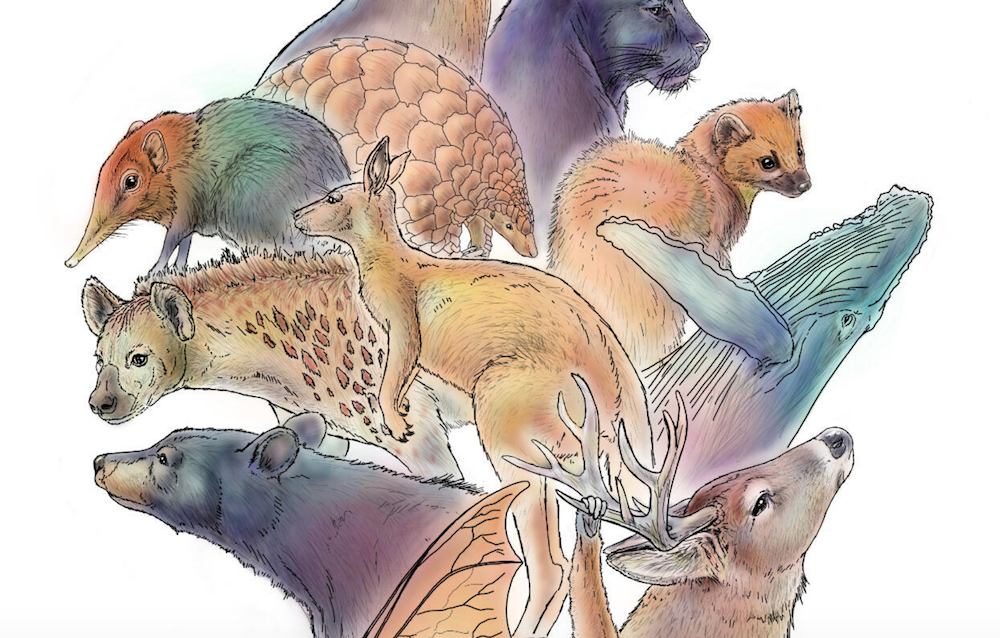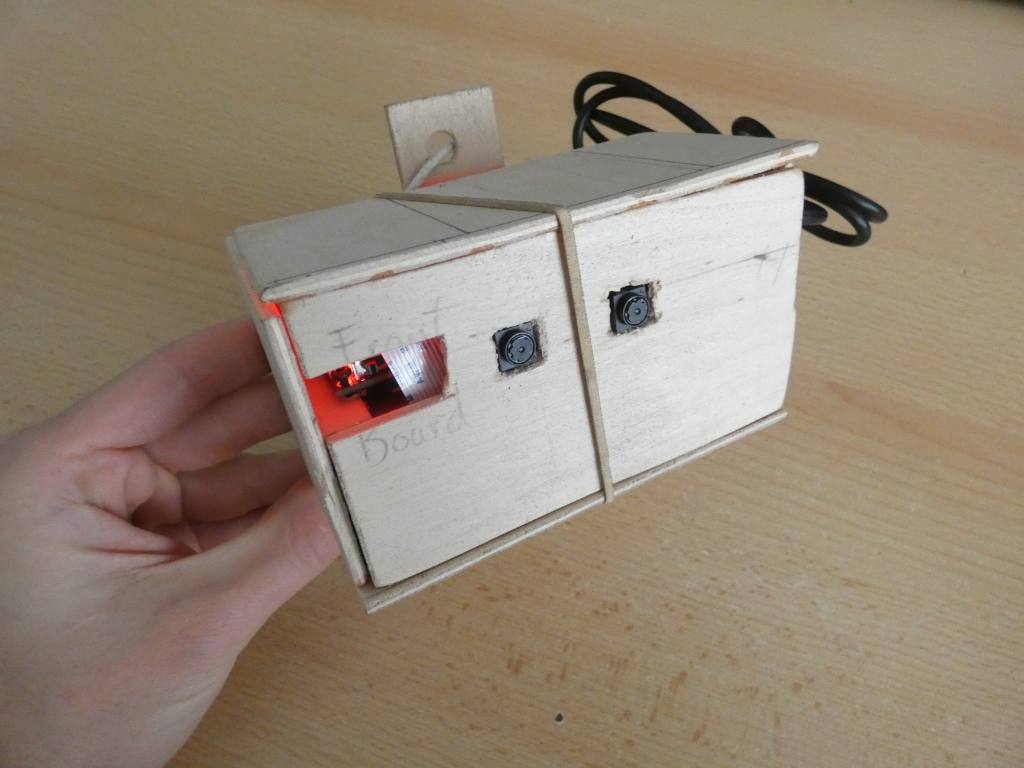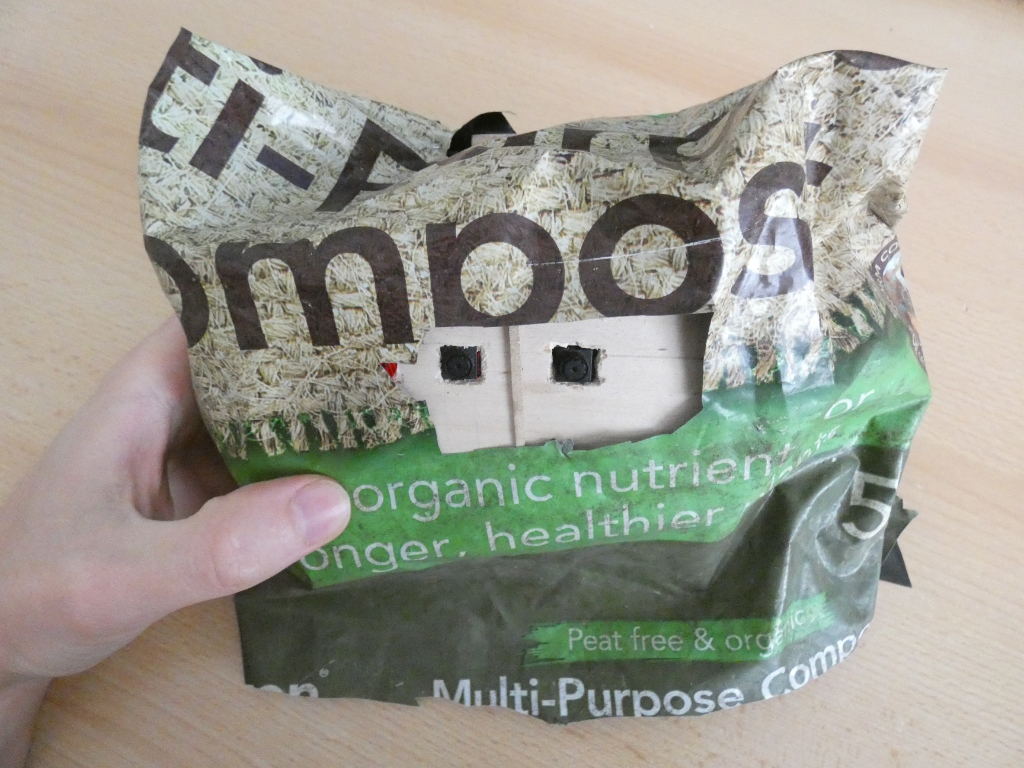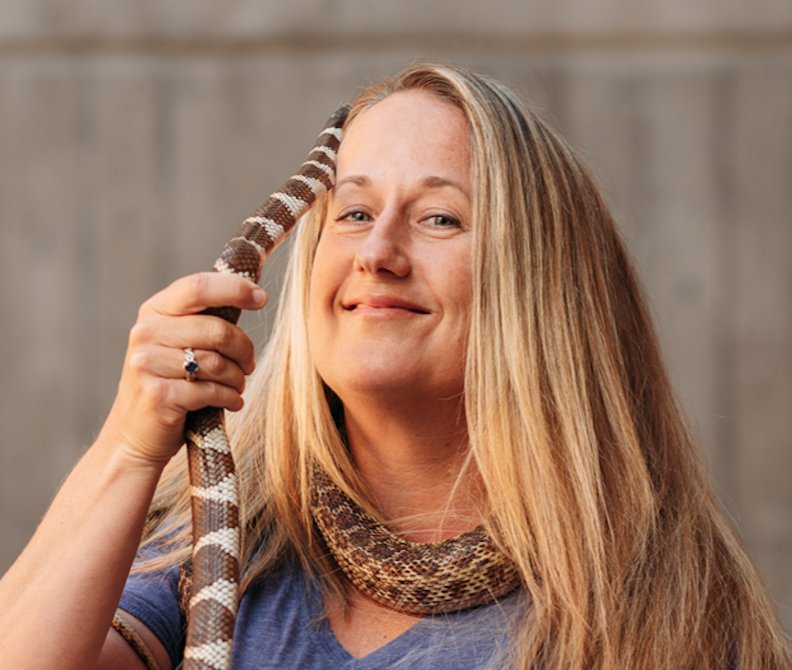Camera traps have been a key part of the conservation toolkit for decades. Remotely triggered video or still cameras allow researchers and managers to monitor cryptic species, survey populations, and support enforcement responses by documenting illegal activities. Increasingly, machine learning is being implemented to automate the processing of data generated by camera traps.
A recent study published showed that, despite being well-established and widely used tools in conservation, progress in the development of camera traps has plateaued since the emergence of the modern model in the mid-2000s, leaving users struggling with many of the same issues they faced a decade ago. That manufacturer ratings have not improved over time, despite technological advancements, demonstrates the need for a new generation of innovative conservation camera traps. Join this group and explore existing efforts, established needs, and what next-generation camera traps might look like - including the integration of AI for data processing through initiatives like Wildlife Insights and Wild Me.
Group Highlights:
Our past Tech Tutors seasons featured multiple episodes for experienced and new camera trappers. How Do I Repair My Camera Traps? featured WILDLABS members Laure Joanny, Alistair Stewart, and Rob Appleby and featured many troubleshooting and DIY resources for common issues.
For camera trap users looking to incorporate machine learning into the data analysis process, Sara Beery's How do I get started using machine learning for my camera traps? is an incredible resource discussing the user-friendly tool MegaDetector.
And for those who are new to camera trapping, Marcella Kelly's How do I choose the right camera trap(s) based on interests, goals, and species? will help you make important decisions based on factors like species, environment, power, durability, and more.
Finally, for an in-depth conversation on camera trap hardware and software, check out the Camera Traps Virtual Meetup featuring Sara Beery, Roland Kays, and Sam Seccombe.
And while you're here, be sure to stop by the camera trap community's collaborative troubleshooting data bank, where we're compiling common problems with the goal of creating a consistent place to exchange tips and tricks!
Header photo: ACEAA-Conservacion Amazonica
- @msgunther1
- | she, her
Micaela Szykman Gunther is a Professor in the Department of Wildlife at Cal Poly Humboldt. She applies studies on animal behavior of (mostly) carnivores and (some) ungulates to inform management of wildlife species.
- 0 Resources
- 0 Discussions
- 4 Groups
- @silvanasitayiari
- | she/her
- 0 Resources
- 0 Discussions
- 7 Groups
Adventure Scientists is a 501(c)3 nonprofit organization based in Bozeman, MT that equips scientists and researchers with high-quality data collected from the outdoors that are crucial to addressing environmental challenges around the world.
- 0 Resources
- 0 Discussions
- 16 Groups
Wildlife Conservation Society (WCS)
I am a biologist interested in land use change impacts on biodiversity and sustainable value chains. I work with productive sectors, incorporating biodiversity conservation as a criteria for planning and managing productive systems.
- 0 Resources
- 0 Discussions
- 3 Groups
- 0 Resources
- 0 Discussions
- 1 Groups
Conservation Biologist; Research interest Human Dimensions on Wildlife Conservation and Conservation Tech
- 0 Resources
- 0 Discussions
- 7 Groups
- @Benedicta
- | She
My name is Ninying Benedicta a PhD student under the Department of wildlife resource management in Cameroon. I love learning about wildlife and their habitats. I also love working with communities surrounding the forests, learning on Traditional Ecological Knowledge.
- 0 Resources
- 4 Discussions
- 4 Groups
I am both head of the Innovation department and a biodiversity consultant at the Biotope consultancy. Originally a botanist and GIS expert, I specialise in the management of innovation projects, in particular software and technological products dedicated to biodiversity.
- 0 Resources
- 0 Discussions
- 6 Groups
Island Conservation
- 1 Resources
- 0 Discussions
- 3 Groups
- @ARobillard
- | He/Him
A conservation data scientist and field ecologist with broad interest in the application of machine learning and population genetics to the conservation of threatened species. Alex has conducted field studies throughout central and south America, the Caribbean, and North America.
- 1 Resources
- 0 Discussions
- 7 Groups
- @pbull
- | he/him
DrivenData
Engineer and AI for Good leader working on bringing machine learning tools to social impact organizations.
- 0 Resources
- 0 Discussions
- 8 Groups
- @nick56swim
- | He
I am an IoT and embedded ML developer. I am also a nature enthusiast with keen interest in conserving the endangered species
- 0 Resources
- 0 Discussions
- 4 Groups
May 2024
event
October 2024
April 2023
February 2023
October 2022
event
Open Source Camera Trap
24 January 2021 7:22pm
31 January 2021 10:06pm
Something I'm working on that might work well for you and is super affordable at about $30 per camera.
ESP32-cam (not super high quality photos though) with a motion sensor and it sends the photos to a PI Zero W that can be accesses at any time via wifi. I'm using the TPlink portable but have found that WemosD1 boards and upgrading the firmware to be able to do wifi repeaters works well.
Here's the camera I'm using:
https://starairvision.com/esp32-cam-motion-camera-with-date-and-time/
I'll make a post on here when the full project is built and I've tested the range. The repeaters use something called mesh networking. You can have a number of them in a row to get the camera out into the forest. Or if you have lign of sight you can use a signal booster and or a directional antenna.
31 January 2021 11:39pm
Thanks Ryan would like to hear more about this, the project look awesome what distance are you getting from your wifi router
Tech Tutors: How do I start a Tech4Wildlife collaboration?
28 January 2021 12:55pm
28 January 2021 6:22pm
One barrier that was discussed in the presentation was the "risk" or uncertainty of a payoff when talking to potential funders. It seems to me that the "risk" factor of collaborations like this, for funders, would be analogous to the investment and payoff when developing a genomics program. Relative to traditional field research, it takes a much greater investment in time, with different expertise, to create a reference genome for a species of interest and then pull SNPs, etc. Nevertheless, funders seem to recognize the potential for genomic research and genomic tools. Do you think that greater openness to “risk” in conservation genomics results from closer intellectual proximity (i.e., molecular biology vs organismal biology), or to conservation genomics being a more mature field (i.e., more examples of success), or to other factors? If intellectual proximity is a key factor, then conservation tech collaborations will continue to face this barrier, but if lack of successful examples are a key factor, then perhaps this barrier will become less of an issue for conservation tech in the future. Thoughts?
30 January 2021 2:26am
Hi. Just watched the Youtube version (I'm in the unable to watch live hemisphere) and wanted to say that was a great talk. I wish it could have gone for another hour. I liked hearing about the issues and concerns from Melanie on the biology/ecology side. Also could totally relate to what Ed was talking about from the tech side about how it's difficult to have long term collaborations since there isn't really a conservation technology career path at the moment.
I think one of the things we're trying to do with courses like Build Your Own Datalogger is to get people involved in wildlife/conservation side more comfortable with the tech. The goal is to hopefully build a shared repository of technical knowledge that people in the wildlife community can contribute to and benefit from.
Akiba
Protecting Wildlife with Machine Learning
 Hack the Poacher
Hack the Poacher
29 January 2021 12:00am
Online thermal imaging courses from the Bat Conservation Trust
26 January 2021 12:00am
WWF: Using Technology to Detect and Protect the Endangered Black-Footed Ferret
 Kristy Bly
Kristy Bly
19 January 2021 12:00am
Tech Tutors: How do I build a community-owned conservation tech research project?
6 January 2021 4:57pm
Making the Most of Tech Tutors Season 2!
30 November 2020 12:00am
Learning Resources: Exploring Species Interactions with Snapshot Serengeti
 Meredith S. Palmer
Meredith S. Palmer
25 November 2020 12:00am
WILDLABS: Building a Better World with ‘Bad’ Data
17 November 2020 12:00am
Tech Tutors: How do I repair my camera traps?
22 July 2020 8:20pm
10 September 2020 4:25pm
Hi all,
I know we mentioned this in the episode and collaborative doc for this episode, but I just wanted to make sure everyone knows about the camera trap troubleshooting spreadsheet our presenters created! The goal is to build up a bank of common problems so we can help each other and have an ongoing resource to use.
Please consider adding your problems into the spreadsheet as well as here in the forum!
-Ellie
6 October 2020 5:55pm
Hi all,
This camera trap repair video about sulfated batteries was shared with us on Twitter and I thought it might be interesting and helpful for this Tech Tutors group! Check it out here and let us know if you find this useful!
-Ellie
3 November 2020 7:03pm
Hi all,
Just saw this on Twitter - a database of all kinds of camera trap user manuals across brands and models. Thought it might be a helpful resource if you're struggling with an old or used camera that you don't have the manual for.
------
Did you buy your #cameratrap years ago and you have lost the user manual?
— cameratraps (@cameratraps1) November 3, 2020
that's my case, but I've the solution!
find here thousand of #cameratrap user manual. Different brands, models...https://t.co/c9FchfINzR
Camera trap repairs
5 August 2020 4:47pm
19 October 2020 5:53pm
Apologies for the super late reply and thank you for all your comments and help. WE had wifi problems at the research station. I managed to fix a few by removing the rust from connectors, leaving them in a sealed container with silica gel. I am not back at home so will look at the different documents and order some equipment before I go back out to be ready for more repairing. Is there a list of other suggested items I should invest in to help with repairs?
25 October 2020 11:28pm
That is great to hear, Mark. I'm interested as to which repair related to each of the symptoms you intially listed, but for now, knowing that more of your cameras work is excellent. I think your use of silica gel to properly dry out the cameras is underrated - this might have to top suggestion for malfunctioning cameras in the future.
A list of basic tools is a good idea. Maybe we should start a separate thread for this, but I'll throw a few in here to start.
Screwdriver set - small electronics screwdrivers, Phillips and flat head. Some cameras are using "torx" heads, so check your equipment and what you may need.
Multimeter - most problems can be checked using a volt meter only, but checking resistance of leads and continuity is very useful.
Pliers and snips - small needle nosed pliers are great for hard to reach pieces, side cutters help a lot for accurately trimming wires. If you start rewiring and soldering then wire strippers are very useful, but the job can be done carefully with a sharp knife if needed.
Soldering iron, solder and flux - if parts are coming loose, cables are getting torn off by animals or you just need to secure old wires better, then soldering is usually needed. A cheap soldering iron will do the job on wires for batteries and general hookup, but fine temperature control and a small tip is better for circuitboards. Do you have mains power - 240V/110V? A battery powered or 12V iron might be needed for a remote field/station. Fine electronics solder is most useful. Flux help clean surfaces for soldering but should be rinsed off to avoid corrosion - I have a "flux pen" that is small, portable. Practice is the key to soldering. There are lots of tutorials online about soldering but give it a go on something sacrificial first to get a feel for temperatures and how molten solder works.
Spare wire - size the wire accoring to the amperage that is needed. Passing too many amps through a fine wire may cause a fire (trust me). Multiple colours are avaialble so you can colour code your +/- and data lines.
Insulation - this should be higher up the list! Electrical tape wrapped around wires and terminals will get the job done, but heat shrink tube in various sizes is more robust (just remember to put it over the wire before you connect it). Kapton tape is good for covering flat, internal electronics like circuitboards.
I hope that helps. Any other suggestions?
Cheers, Al
1 November 2020 3:11am
I also just found this similar summary of equipment on youtube - https://youtu.be/pNBkfE8UPDI. The breadboard and components are a good addition for building and testing circuits.
Snapshot USA Symposium for Student Research
 Roland Kays
Roland Kays
27 October 2020 12:00am
Tech Tutors: How do I train my first machine learning model?
18 June 2020 1:19pm
8 October 2020 9:45pm
Hi Wildlabbers,
Just popping in to share this very cool primer for beginners to embedded machine learning from our tutor Daniel Situnayake! If you're interested in learning more about the basics of TinyML, this is a great resource.
-Ellie
Training Opportunity: HarvardX TinyML Course
 edX
edX
30 September 2020 12:00am
COVID Cameratrap Comparison Collaboration: Call for Data
25 September 2020 5:35pm
Model Question: Bushnell Trophy Cam HD Low-Glow 119719CW
27 August 2020 5:18am
31 August 2020 12:43am
Hi
I don´t know about that specific model number, but all "modern" Bushnell's I've seen had that option. But have in mind that after the picture the camera needs some time to start the video, sometimes up to 9 seconds, which for many animals might be excesive. In my case working with carnivores in the high Andes, we missed most of the videos.
Maybe they improve on this, the experience I'm mentioning was with a model bought two years ago named Bushnell Trophy Cam Aggressor (Low-Glow), 36 LEDs 14MP (I don't know the model number).
I hope it helps.
Bests
2 September 2020 3:17am
Hi Juan,
Thank you for your reply. Finger cross that the model we are buying can operate in hybrid mode. We currently use Trophy Cam Agressor 119776 and 119774, and both can shoot in hybrid mode. I can actually find a manual for these two models to confirm this functionality.
And good to know about the delay. We've been quite lucky thus far with the two models above. Typically, I notice the lag hovers around 1 sec only.
Have a nice day!
Best wishes,
22 September 2020 12:06pm
Just in case anyone out there who's wondering the same as I did. I finally have this specific model in hand, and no it doesn't record in hybrid mode.
Webinar: Advances in Fisheries Electronic Monitoring
 SAFET
SAFET
21 September 2020 12:00am
Meet the Scientists of Black Mammalogists Week!
 Black Mammalogists Week
Black Mammalogists Week
10 September 2020 12:00am
Tech Tutors: Review Session
3 September 2020 12:00am
Stereoscopic Camera Project
24 August 2020 1:02pm
24 August 2020 1:21pm
Should have posted this up first, but here's an earlier case prototype that I quickly put together to test its durability outside in the elements. It worked quite well, even when raining. Always save your old compost bags, very useful for waterproofing things (unless they have those tiny holes in!)



28 August 2020 3:43pm
This is awesome, Tom! I think it would definitely be really helpful for individual identification of animals, as the 3D would give you a better perspective on distinctive markings, coloration, size, etc.
29 August 2020 12:25am
Thanks Carly! I was thinking similar things, you can identify shape a lot better when you see an object with depth rather than without.
The two cameras can be configured to be a long distance apart or closer together too which means animals right up close or really far away can be identified easier. It also means that you can have the vision of a mouse or an elephant .. or a lemur!
Designing a Camera Mount with FLIR and WWF
 Ashley Rosen
Ashley Rosen
24 August 2020 12:00am
Laure Joanny Reviews: Tech Tutors' How Do I Repair My Camera Traps?
 Laure Joanny
Laure Joanny
20 August 2020 12:00am
7 October 2022 6:13pm
Metal Detecting Sensors for Anti-Poaching
 Sam Seccombe
Sam Seccombe
10 August 2020 12:00am
Model Question: CT Detection angle and Field of View
24 June 2020 3:50pm
31 July 2020 10:49am
Hi Hana,
https://www.trailcampro.com/pages/trail-camera-detection-field-of-view-angle
https://www.trailcampro.com/pages/how-why-we-test-trail-cameras
Trailcamerpro.com have the above details. They measure field of view with a ruler at a set distance and some maths. Detection angle is harder and one way is to do a slow walk test, a foot every 20 seconds, across the cameras view and work out where the camera first captures images and then map this back to the field of view.
Hope this helps,
Sam
31 July 2020 5:17pm
Hi Hana, I know for Bushnell the manual has the FOV, it should be 50 degrees for yours. All the manuals are online so you just have to find your model. https://www.bushnell.com/bu-manuals.html
As for the detection radius I agree with looking at trailcampro, to see if they've tested your model.
4 August 2020 9:55am
Fig 2 here; https://onlinelibrary.wiley.com/doi/full/10.1111/aje.12573 might help for the Bushnell. I haven't tested Stealthcams.
There is more here; https://www.researchgate.net/project/A-realistic-reproducible-and-rigorous-test-for-wildlife-camera-trap-performance
Event: StreamingScience's #Tech4Wildlife Thursdays
 StreamingScience
StreamingScience
3 August 2020 12:00am
Tracking Wild Reptiles, Amphibians, And Their Temperatures
 Emily Taylor
Emily Taylor
31 July 2020 12:00am
15 September 2023 11:02pm
16 October 2023 4:07pm
Automated Fish Identification and Abundance Using Artificial Intelligence
 The Global Wetlands Project
The Global Wetlands Project
28 July 2020 12:00am
BearID To Go
 BearID Project
BearID Project
21 July 2020 12:00am
How do I build bespoke conservation technology?
 Nigel Butcher
Nigel Butcher
20 July 2020 12:00am
How do I repair my camera traps?
13 July 2020 12:00am

























25 January 2021 4:41am
Akiba I have used ubiquiti loco m5 to broadcast internet with great success when I was setting up internet for a park for a 10k run I was able to get atleast a mile with no issues with internet
not discorcuaged just looking to piggy back off of a local wifi and be able to connect to a diy camera trap and be able to either do live video feed or capture a pic and then with a program I create send it to email or txt message
the place I am looking at I can get almost a mile in distance but the problem is the power it would have to be some kind of solar power don't want to have to change batteries ever other day